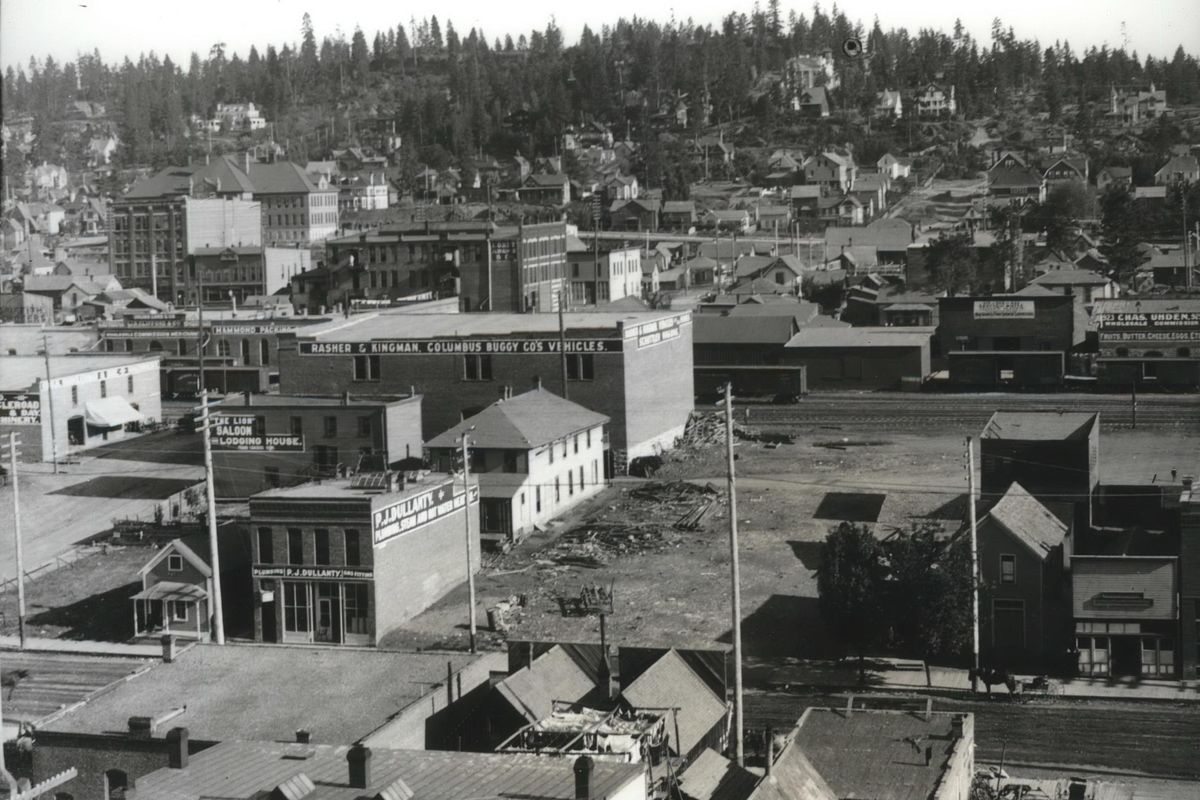MAC tour of ‘ghost signs’ offers glimpse into Spokane’s past

The Northwest Museum of Arts and Culture will host a historical “Ghost Signs” walking tour of Browne’s Addition and the west end of downtown Spokane on Saturday.
The faded signs high on the walls of some of Spokane’s oldest buildings will be the highlight of the tour, but MAC archivist Anna Harbine will also talk about the history of the area itself. The tour will focus on what is now West Sprague Avenue, otherwise known as the West Transportation Corridor.
“Really, it’s talking a lot about how the city moved,” Harbine said. “Sprague was Highway 10. If you went from Montana to Seattle, you took Highway 10.”
The tour will begin at the MAC at 10 a.m. and head downtown as far as Monroe Street before doubling back to end at the Rocket Bakery at 11:30 a.m.
Near the turning back point the tour group will be able to see a faded sign on the back of a brick building across from the Steam Plant Grill that reads, “Rasher and Kingman Vehicles of All Kinds. Schuttler Wagons.”
“They sold wagons before cars,” Harbine said.
Many of the buildings with extremely old signs are clustered near the railroad tracks, which were at ground level back in the early 1900s. “Most of the buildings that still have signs are commercial buildings,” he said. “These are not advertisements. These are the buildings that housed those businesses.”
The east end of downtown has more of the faded advertisements, including Coca Cola signs painted high on brick walls.
Harbine became interested in the old signs when she was in graduate school and made it part of her master’s thesis project. She and a partner took the research an Eastern Washington University class had done on the old signs and built on it. They created a walking tour featuring the signs in 2013 to show what could be done with the information to make it accessible to the public.
The signs make it easier to learn about a city’s history without focusing on such notable figures as architect Kirtland Cutter and city father James Glover, Harbine said.
“It’s a really great way to learn about your city that’s unexpected,” she said. “We’re talking about ordinary, everyday businesses.”
The signs are faded after decades of weathering storms yet are still legible. In some cases, people have tried to paint over them, but they’re still visible. “Lead paint has an amazing ability to peek out of anything you paint over it, especially the white,” she said.
Still, many signs are untouched, though that’s by accident and not any sort of preservation plan. “Signs are not protected,” she said. “Part of the reason why they stayed is because people like the look of them.”
Some cities have tried to preserve such ghost signs by repainting them, but Harbine doesn’t like that approach. “I like that they’re fading, really,” she said. “It’s a remnant of a city’s past. Sometimes it’s all we know about people who used to live in the city.”
The tour is designed for people who drive by old buildings and wonder what sort of business used to be there back in the beginning of Spokane’s history. “I think everyone drives by old buildings and wonders what used to be there,” she said.
Saturday’s tour will take place rain or shine and is already filling up, though Harbine said if there’s enough demand the museum will likely put on another tour.